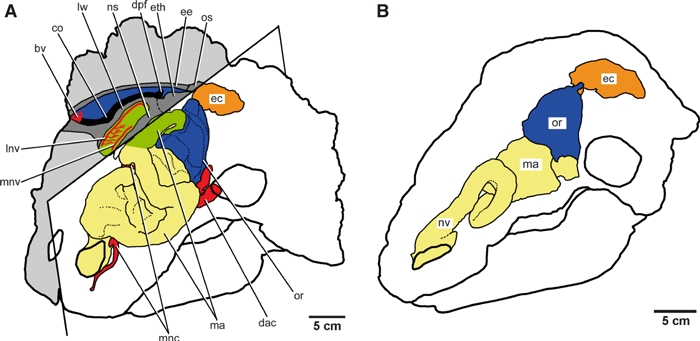Fig. 1.

Schematic reconstructions of the nasal cavity morphology of two ankylosaur skulls. (A) The ankylosaurid Euoplocephalus tutus (AMNH 5405). The left half of the skull is derived from the reconstruction published by Witmer & Ridgely (2008), whereas the right half represents new information based on the osteological correlates of the soft tissues within and around the nasal cavity in UALVP 47977. The specimen (UALVP 47977) preserves parts of the main airway (in green), the olfactory region (in blue), and the endocranial cavity (in orange). (B) The nodosaurid Panoplosaurus mirus (ROM 1215) after Witmer & Ridgely (2008) for comparison. The nasal passage of Euoplocephalus is looped in more complex ways than that of Panoplosaurus, and the olfactory region of Euoplocephalus is pushed to the side of the main airway. bv, blood vessel trace; co, groove that possibly housed the concha; dac, dorsal alveolar canal; dpf, descending process fused to the ventral surface of the frontal; olfactory turbinate; ec, endocranial cavity; ee, ectethmoid; eth, ethmoidal complex; lnv, lateral nasal vessels; lw, lateral wall of the main airway; ma, main airway; mnv, medial nasal vessels; mnc, medial nasal canal; ns, nasal septum; nv, nasal vestibule; or, olfactory region; os, orbitosphenoid.
